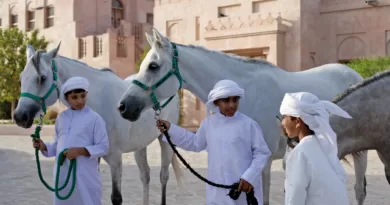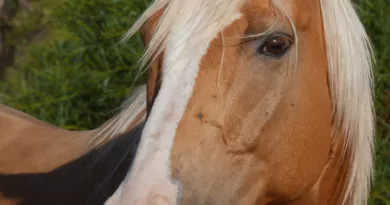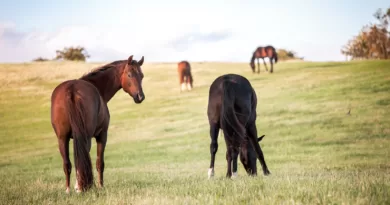How to Teach a Horse to Lay Down
Introducing the Concept of Laying Down
Introducing the concept of laying down to a horse is an essential part of their training. This command not only serves as a foundation for more advanced maneuvers but also provides a valuable exercise for the horse’s physical and mental well-being. However, it is crucial to approach this training with patience and a careful, step-by-step approach.
To begin the process, it is recommended to start with simple movements and commands that gradually introduce the idea of lying down. This can be done by teaching the horse to lower their head and neck on cue, followed by bending their knees and eventually fully laying down. By breaking down the process into smaller tasks, the horse can understand and learn the desired behavior more easily. Consistency, positive reinforcement, and clear communication are key factors in successfully introducing this concept to the horse.
Gradually introducing the concept of laying down to the horse, starting with simple movements and commands.
To effectively introduce the concept of lying down to a horse, it is essential to start with simple movements and commands. This gradual approach helps the horse to understand and build a foundation for the desired behavior. One way to begin is by teaching the horse to lower its head on cue. By using a gentle pressure on the lead rope or reins, accompanied by a verbal cue such as “head down,” the horse can learn to respond by dropping its head to a lower position. This simple movement helps the horse to understand the idea of shifting its weight and prepares it for the next steps in the training process.
As the horse becomes more comfortable with lowering its head, further commands and movements can be introduced to help progress towards the ultimate goal of lying down. For instance, a command to ask the horse to take a step backwards can be incorporated. By giving a slight pressure on the halter or bridle and using the cue “back,” the horse can learn to step backwards with its hind legs while keeping its front legs still. This movement encourages the horse to shift its weight backwards, preparing it for the next stage of the training where it will gradually learn how to lower its entire body to the ground.
Implementing Positive Reinforcement
Positive reinforcement is a fundamental tool in the process of training a horse to lay down. It involves the use of rewards, such as treats or praise, to encourage the horse to associate the desired behavior with a positive outcome. By consistently rewarding the horse for correct responses, the trainer can reinforce the connection between the desired behavior and the reward. This helps to create a positive learning experience for the horse and motivates them to continue performing the behavior.
One common technique used in positive reinforcement training is clicker training. This involves using a small handheld device that makes a distinctive clicking sound when pressed. The click serves as a signal to the horse that they have performed the desired behavior correctly, and is immediately followed by a reward. The click becomes a conditioned reinforcer, signaling to the horse that they will be rewarded for their actions. Through repetition, the horse begins to understand that the click is a positive indicator and strives to earn the reinforcement associated with it.
Using positive reinforcement techniques to encourage and reward the horse for correct responses during the training.
Positive reinforcement is a powerful tool when it comes to horse training. By utilizing this technique, trainers can encourage and reward correct responses from their equine partners. One common approach is to offer a treat or a verbal cue when the horse performs the desired behavior. For example, if the trainer wants the horse to move their hindquarters to the right, they would apply pressure to the horse’s hindquarters and release the pressure as soon as the horse takes a step in the desired direction. This helps the horse understand that their response was correct, and they are subsequently rewarded for their effort.
Another way to employ positive reinforcement is through the use of clicker training. With this method, trainers use a handheld clicker to produce a distinct sound, followed immediately by a reward such as a treat or a rub. The clicker acts as a marker, signaling to the horse that they have performed the correct behavior. The horse then associates the sound of the clicker with the reward, making it a powerful tool for communication during training sessions. By consistently pairing the click with the reward, horses quickly learn to recognize and repeat the desired behavior.
Progressing to Target Training
When the horse has become comfortable with the basic movements and commands, it is time to progress to target training. Target training involves using a specific object or target to guide the horse into the laying down position. This method helps to create a clear visual cue for the horse to understand what is expected of them.
To start target training, a small object such as a plastic cone or a handheld target stick can be used. The trainer can hold the target near the horse’s nose, guiding them towards it. Initially, the horse may show some confusion or resistance, but with patience and consistent reinforcement, they will begin to understand that touching the target leads to positive rewards. Gradually, the target can be placed lower and lower until the horse associates the target with the laying down position.
Progressing to target training, which involves using a specific object or target to guide the horse into the laying down position.
Target training is a technique that can be highly effective in teaching a horse to lay down on command. By using a specific object or target, such as a mat or a cone, trainers can guide the horse into the desired position. The target serves as a visual cue for the horse to follow, making it easier for them to understand what is expected of them.
To begin target training, the trainer will first need to introduce the target to the horse. This can be done by presenting the object and allowing the horse to investigate and interact with it in a positive and non-threatening manner. Once the horse is comfortable with the target, the trainer can begin to use it to guide the horse into the laying down position. By gradually moving the target towards the ground and rewarding the horse for following it with their nose or body movement, the horse will learn to associate the target with the laying down command. With consistent practice and reinforcement, the horse will eventually be able to lay down on command when presented with the target.
Building Trust through Desensitization
Building trust is an essential aspect of horse training, and desensitization is a powerful tool to achieve this. Desensitization involves exposing the horse to various objects, sounds, and sensations, gradually reducing their fear or anxiety response. By gradually introducing these stimuli, the horse learns that there is no real threat and can become more confident and trusting in their environment. This process is particularly valuable when teaching a horse to lay down, as it requires a high level of trust and relaxation.
During desensitization, it is crucial to start with simple objects or sensations and gradually increase the complexity. This allows the horse to become accustomed to new stimuli in a controlled and comfortable manner. By introducing objects such as plastic bags, tarps, or noisy equipment, the horse learns to remain calm and trust their handler’s guidance. Additionally, incorporating positive reinforcement techniques, such as rewards or praise, can help further reinforce the horse’s trust and confidence. Through desensitization, the horse becomes more adaptable and willing to trust their handler, creating a solid foundation for the laying down training.
Building trust and confidence by desensitizing the horse to various objects and sensations that may be encountered during the training.
Building trust and confidence in a horse is essential for successful training, especially when it comes to introducing new objects and sensations. By gradually exposing the horse to a variety of stimuli in a controlled and positive manner, we can help them develop a sense of calmness and trust in their environment. This process, known as desensitization, involves gradually introducing the horse to different objects such as plastic bags, umbrellas, and loud noises, allowing them to become accustomed to these potentially frightening or unfamiliar objects.
One effective technique for desensitization is to start with smaller, less intimidating objects and gradually progress to larger or more challenging ones. For example, we may begin by introducing the horse to a small plastic bag that is gently waved in the air, allowing them to sniff and investigate it at their own pace. As the horse becomes more comfortable with this object, we can gradually increase the level of intensity by making louder noises or introducing larger objects. By using progressive desensitization, we can help the horse develop a sense of confidence and trust in their ability to handle new or potentially overwhelming situations.
• Gradually exposing the horse to a variety of stimuli in a controlled and positive manner helps them develop trust and calmness.
• Desensitization involves introducing the horse to different objects, such as plastic bags and umbrellas, allowing them to become accustomed to potentially frightening or unfamiliar items.
• Starting with smaller, less intimidating objects and gradually progressing to larger ones is an effective desensitization technique.
• Introducing a small plastic bag that is gently waved in the air allows the horse to investigate it at their own pace.
• Increasing the level of intensity by making louder noises or introducing larger objects helps build confidence and trust in handling new situations.
Overcoming Challenges and Obstacles
One of the common challenges that horse trainers may encounter when teaching the laying down command is resistance from the horse. Some horses may have a natural reluctance to lie down due to fear or discomfort. It is important for the trainer to approach this challenge with patience and understanding. By gradually introducing the concept of laying down, starting with simple movements and commands, the trainer can help the horse overcome their fear or discomfort and develop trust in the training process.
Another obstacle that trainers may face is the horse’s tendency to anticipate commands or become overly excited during training sessions. Horses are highly perceptive animals and can easily pick up on patterns or cues. This can lead to them anticipating the laying down command or becoming overly energetic, making it difficult for them to stay focused and calm. Trainers can overcome this by implementing positive reinforcement techniques and maintaining a consistent training routine. By rewarding the horse for correct responses and encouraging a calm and relaxed demeanor, trainers can help the horse stay focused and better manage their excitement during training sessions.
Addressing common challenges and obstacles that may arise during the training
During the training process, horse owners and trainers may encounter various challenges and obstacles. One common challenge is resistance from the horse. Some horses may be hesitant or unwilling to lay down, making it difficult to progress in the training. This resistance can be due to fear, discomfort, or confusion. To address this challenge, it is important to go at the horse’s pace and make sure they feel comfortable and safe. Building trust and using positive reinforcement techniques can help encourage the horse to overcome their resistance and gradually become more accepting of the laying down command.
Another challenge that may arise during the training is the tendency for horses to become impatient or frustrated. Horses are naturally curious and may lose focus or become easily distracted, leading to frustration for both the trainer and the horse. To overcome this obstacle, it is important to keep training sessions short and engaging, using variety in exercises and movements. By keeping the horse mentally stimulated and rewarding their correct responses, they are more likely to stay engaged and focused throughout the training session. Patience and consistency are key in overcoming impatience and frustration, as it may take time for the horse to fully understand and master the concept of laying down.
What is the concept of laying down in horse training?
Laying down is a command taught to horses to lie down on their side. It is an important skill that can be useful for medical procedures, such as hoof care or veterinary exams.
How do you gradually introduce the concept of laying down to a horse?
Gradual introduction involves starting with simple movements and commands, such as asking the horse to lower its head, bend its neck, or shift its weight. These movements prepare the horse for the eventual laying down command.
How can positive reinforcement be used during the training?
Positive reinforcement techniques, such as rewards and praise, can be used to encourage and reward the horse for correct responses during the training. This helps to reinforce the desired behavior and motivate the horse to continue learning.
What is target training and how does it help with teaching a horse to lay down?
Target training involves using a specific object or target to guide the horse into the laying down position. By associating the target with the desired behavior, the horse learns to follow the target and eventually understands the laying down command.
How does desensitization contribute to building trust during the training?
Desensitization involves exposing the horse to various objects and sensations that they may encounter during the training. By gradually introducing and familiarizing the horse with these stimuli, trust and confidence are built, reducing fear or anxiety in the horse.
What are some common challenges and obstacles that may arise during the training?
Common challenges and obstacles during horse training may include resistance to commands, fear or hesitance, physical limitations, or distractions. These issues can be addressed through patience, consistency, and understanding the individual needs of the horse.




